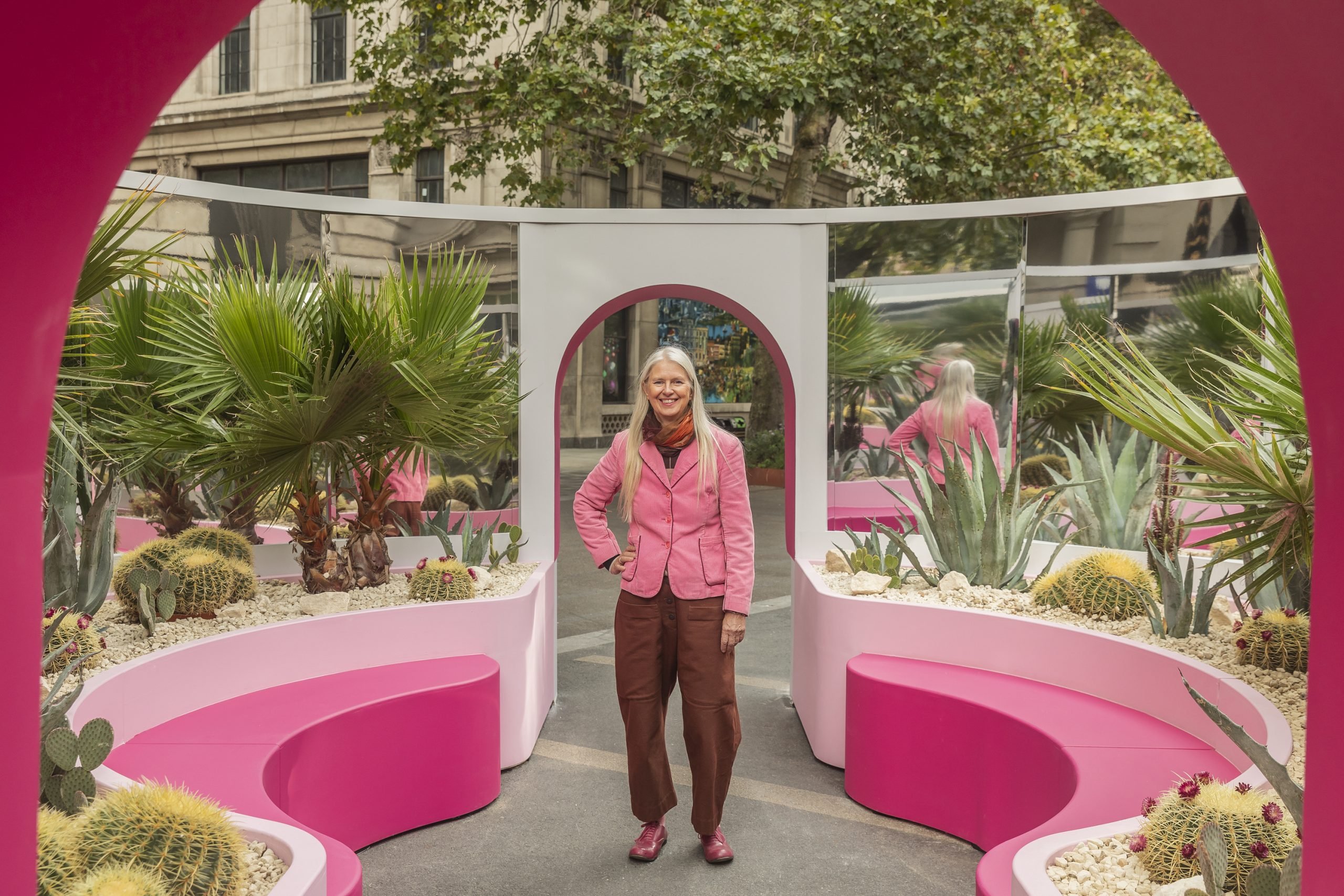
Brat summer might be over, but Barbie summer is forever. And, although mid-century modern evokes Southern California more than England, three playful installations honoring Barbie’s DreamHouse have landed in Central London’s new Strand Aldwych pedestrian plaza, just in time for the 22nd annual London Design Festival.
London-based Danish designer Nina Tolstrup dreamt up these interactive public artworks, which mark Barbie’s 65th anniversary by celebrating the style that defines the doll’s DreamHouses. The presentation, titled “Pavilions of Wonder,” complements a major Barbie exhibition at London’s Design Museum, and follows by a year the live action blockbuster film directed by Greta Gerwig and starring Margot Robbie as Barbie herself.
The first Barbie DreamHouse. Courtesy of London Design Festival.
Barbie’s DreamHouses drew heavily from midcentury modern design in the decades following their 1962 rollout. By then, the Southern California city of Palm Springs had become an international hub for the style, which still appears across luxury resorts, celebrity homes, and public buildings, all envisioned by the era’s preeminent architects. (Toy company Mattel and Visit Greater Palm Springs sponsored the London installation.) In June, Tolstrup made her first trip to tour the buildings of Palm Springs in preparation for “Pavilions of Wonder.”
Coachella Valley Savings and Loan Bank, designed by E. Stewart Williams. Courtesy of London Design Festival.
“We are of course very familiar with midcentury modern architecture in Europe,” Tolstrup noted in an email interview. However, she was struck by how a desert setting can underscore such structures. “The climate, panoramic views of the surrounding mountains, and open structure housing with fluidity between the inside and the outside is incredibly special,” Tolstrup said.
“Dream – Infinity Garden”. Courtesy of London Design Festival.
The exterior of her pavilion “Dream: Infinity Garden” specifically draws on the tapered colonnade of E. Stewart Williams’s Coachella Valley Savings and Loan Bank. Although Tolstrup cited Danish architect Arne Jacobsen among her influences, in this work, she’s evidently channeling Yayoi Kusama. The mirrored interior of “Infinity Garden” transforms its ring of succulents into an infinite desert landscape. Outside, the pavilion gives the illusion of floating, evoking both mirages and the pools featured in most DreamHouses.
2018 Barbie DreamHouse. Courtesy of London Design Festival.
Meanwhile, Tolstrup’s curvilinear “Discover: Design Stories” honors the distinctive waterslides on the most recent Barbie DreamHouses. Here, visitors gaze through eight peepholes upon charming vignettes that also compare DreamHouses with the styles of Palm Springs.
Passersby enjoying “Discover – Design Stories.” Courtesy of London Design Festival.
The project’s third installation, “Reflect: Playful Pauses,” presents a geometric grid design that riffs equally off Modernist architect Albert Frey’s 1952 Palm Springs City Hall and the 2023 Barbie DreamHouse.
Albert Frey, Palm Springs City Hall, 1952. Courtesy of London Design Festival.
This pavilion creates space for visitors to find calm atop a pink perch beneath a mirrored ceiling, surrounded on two sides by mesmerizing magenta walls, which also resemble Palms Springs’ signature breezeblocks—functional yet decorative permeable fences which filter sun and wind while offering a degree of privacy. After sunset, “Playful Pauses” comes alive with lights.
Tolstrup inside “Reflect – Playful Pauses.” Courtesy of London Design Festival.
Overall, Tolstrup says the full trio plays nicely with the geometric simplicity of the plaza’s existing architecture, offering “colour and vibrancy in sympathy with the Strand’s beautiful light grey Portland stones.”
“Pavilions of Wonder” will be open free of charge to the public throughout the fest’s run. Additional highlights from this year’s edition include a suspended, immersive sculpture by Turkish artist Melek Zeynep Bulut at the Old Royal Naval College, and a rhythmic performance around the act of making West African fufu at the V&A.